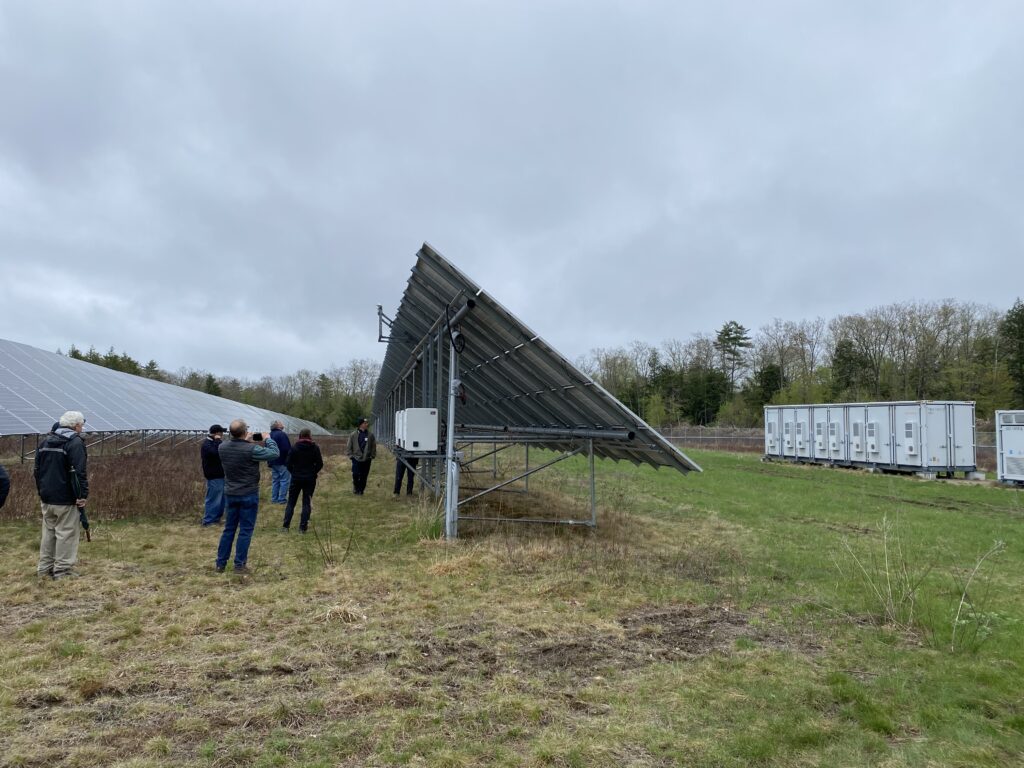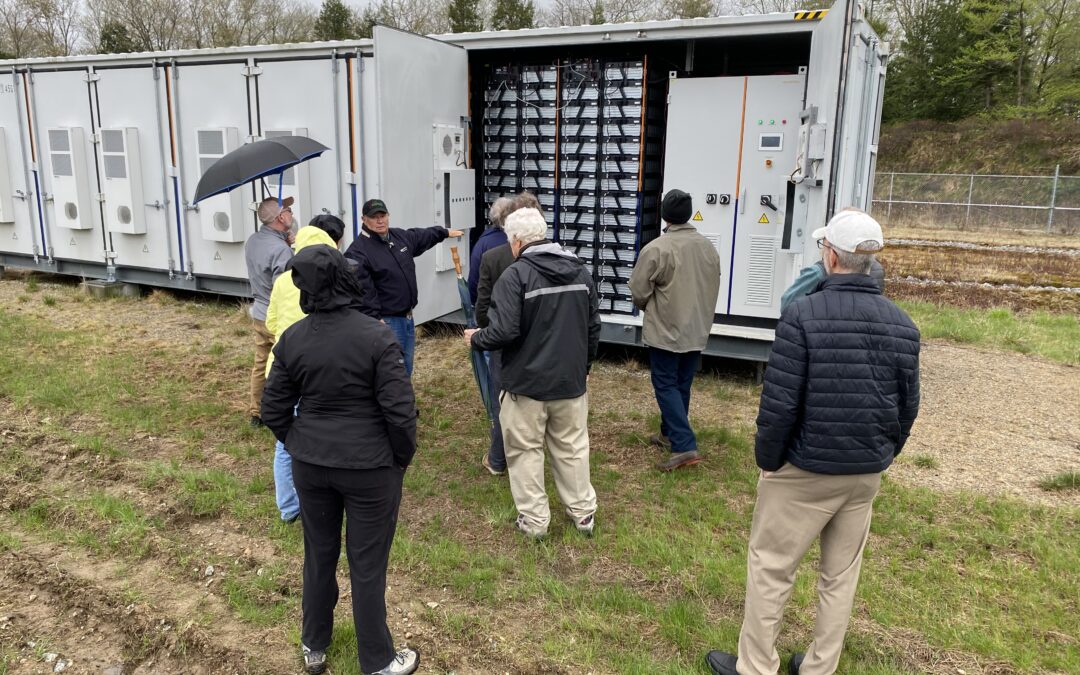Note: This is my column in this week’s Monitor. A reader pointed me to a battery-storage system set up near hydropower on the Androscoggin river; part of it is in Maine, but it totals a whopping 30 MW so maybe this isn’t the biggest in the state after all.
Before we discuss details of New Hampshire’s largest battery-storage system, let’s dispense with the fear that the lithium-ion array is about to burst into flame, a concern you hear from people who happily shove battery-filled phones into their pants every morning.
In the four years since the battery system started in Moultonborough, no fires have occurred. No explosions, not even smoke. Not much seems to have happened at all, which is a good thing if you have to oversee maintenance.
“I mow it once a year to keep trees from growing. That’s about it,” said Gary Lemay, director of facilities for New Hampshire Electric Co-op, which operates the batteries and owns the huge solar array that also sits on the 12-acre site. “It just runs.”
It’s not true to say nothing has happened with the batteries, however. Even though they only operate about 70 hours a year, twiddling their thumbs the rest of the time, the 2.45 megawatt project has saved the co-op hundreds of thousands of dollars in what are known as demand charges. The batteries put power into the grid during peak hours –usually hot summer afternoons – when NHEC would have otherwise had to buy expensive electricity that, due to the vagaries of the way the electric grid is financed, would have cost them extra all year long.
The co-op estimates the discharges will save it $2.3 million over the next 12 years, although that’s something of a guess since electric rates are always changing.
“If I had my way, we’d have five of these,” Lemay said during a tour last week of the soggy site (yes, it was raining).
The batteries could be doing more, absorbing and releasing electricity frequently to help stabilize the grid and maybe save NHEC some more money, but a relatively small utility like the co-op still has a learning curve on how best to use them. Give them time.
The batteries are alongside New Hampshire Electric Cooperative’s 2.59 megawatt DC solar array, which was built in 2018. The array sits in 12 acres of fenced-in land and provides cheap electricity when the sun’s out, enough for about 1,400 homes at peak output.
“The kilowatt-hours probably never leave town,” Lemay said. That points to another advance of solar arrays: By providing electricity close to the user they don’t add stress to the distribution system of poles and wires, reducing the need to build more of that very expensive stuff.
This is why everybody indirectly benefits when anybody puts up solar panels: They lower the need for future construction.
The storage system consists of a 40-foot prefab container filled with stacks of batteries, air conditioning and some automatic fire suppression. It was placed in 2021 and is owned by Engie North America. NHEC has a contract to use it to avoid demand charges.
The solar array is big, with some 7,000 panels stacked five high on metal frames that have been literally screwed into the ground – no concrete footings. It will lose its crown as the state’s biggest utility-owned solar array later this year when Unitil turns on its 4.9 megawatt array in Kingston and is already surpassed in size by Fidelity Insurance’s private 3.1 megawatt array in Merrimack.

Total cost for building the facility was about $5 million, $1 million of which went to site work, Lemay said. Various grants and tax breaks made the financing possible.
I visited the site during a tour organized as part of New Hampshire Energy Week. The week was hosted by Clean Energy NH and like-minded groups who are girding their loins to keep Trump and cronies from completely destroying America’s energy future.
Solar and batteries are integral to that future because they’re the most versatile energy system ever devised. You can have a few panels on the roof and a Powerwall in the basement or you can have the massive systems showing up in Texas or in California, where they’ve often outperformed the states’ fossil fuel and nuclear plants combined. Just mix and match to suit your needs.
Solar and batteries are also much quicker to build than any other power plant, which is a huge money-saver, and over time, they’re dirt cheap since you don’t have to buy any fuel or pay much for maintenance.
Some battery chemistries do sometimes burn, so they’re not perfect. But fuels like gasoline and heating oil and natural gas (methane) also sometimes burn. Batteries are more alarming because they’re relatively new and are different than building fires, so fire departments don’t always know the best way to deal with them.
NEC sponsored some training for this installation, but considering the isolation of this system, Lemay said he gave the Moultonborough Fire Department a piece of advice: “If there’s ever a fire just stand at the fence and watch it burn.”


 Return to the Concord Monitor
Return to the Concord Monitor